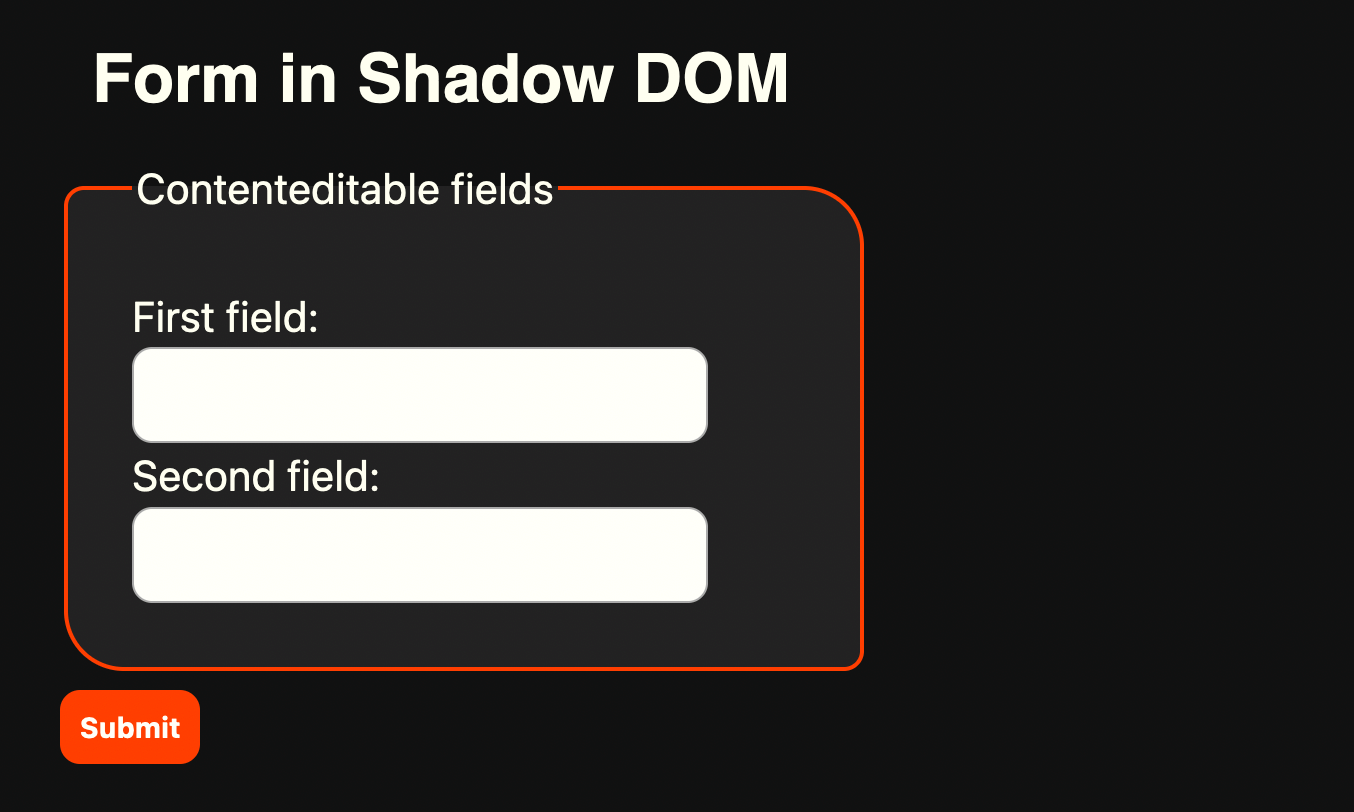Shadow DOM, Firefox and contenteditable
Making focus work correctly on contenteditable elements when using the shadow DOM

This is more of a short note about some experiments when working with web components that I’m publishing as a reference for future me (or other people that experience the same issue).
I’ve been experimenting with web components in order to build a wrapper for Felte that can easily be used with vanilla JS. One of Felte’s features is the ability to use custom field components that are not based on the browser’s native inputs (input, textarea, select). The example I show is a div with an attribute [contenteditable=“true”]. While testing this experiment I found some weird behaviour coming from Firefox: while I could perfectly click each field and type of it, if I tried to use the form only using the keyboard (tabbing to each field) the focus moved but trying to type would always result in the text being added to the first field I focused.
Another confusing behaviour is that, even if you can type on the element when clicking on the element itself, the care is not displayed at all. So there’s no visual cue indicating the user that the element itself is editable. Currently, there’s an open issue on bugzilla that seems to be exactly this.
This behaviour is, of course, unacceptable. Specially since forms (and web applications in general) should be accessible to keyboard users. In order for the demo I was working on to function correctly I went to look for an immediate solution. After some research I found that the solution that works more consistently for me is to not add [contenteditable] to the fields on render and, instead, add event listeners that dynamically add the attribute on focus and remove it on blur:
function handleFocus(e) {
e.target.setAttribute('contenteditable', '');
}
function handleBlur(e) {
e.target.removeAttribute('contenteditable');
}
// We query the shadowRoot of the element that contains
// our `contenteditable` fields
element.shadowRoot.querySelectorAll('div[role="textbox"]').forEach((el) => {
el.addEventListener('focusin', handleFocus);
el.addEventListener('focusout', handleBlur);
});Or better yet, in order to make it more easy to reuse, make a custom element that behaves like this:
function handleFocus(e) {
e.target.setAttribute('contenteditable', '');
}
function handleBlur(e) {
e.target.removeAttribute('contenteditable');
}
export class MyField extends HTMLElement {
constructor() {
super();
// Make the element focusable
this.setAttribute('tabindex', '0');
// Assign a role for assistive technologies
this.setAttribute('role', 'textbox');
// Some default styles
this.style.display = 'block';
this.style.cursor = 'text';
}
connectedCallback() {
this.addEventListener('focusin', handleFocus);
this.addEventListener('focusout', handleBlur);
}
disconnectedCallback() {
this.removeEventListener('focusin', handleFocus);
this.removeEventListener('focusout', handleBlur);
}
}
customElements.define('my-field', MyField);This way you can use <my-field></my-field> as a [contenteditable] “div”!
Keep in mind that this article only worries about making focus work correctly on a [contenteditable] element. There’s more things that you should consider when doing something like this which would depend on your use-case.